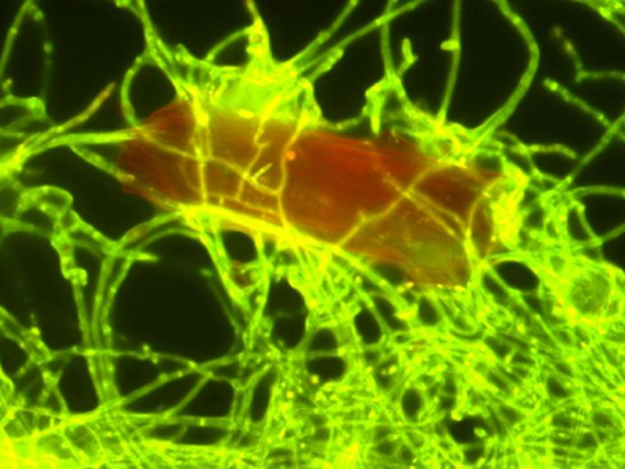- Courses
- GS Full Course 1 Year
- GS Full Course 2 Year
- GS Full Course 3 Year
- GS Full Course Till Selection
- Online Program
- GS Recorded Course
- NCERT (Recorded 500+ Hours)
- Polity Recorded Course
- Geography Recorded Course
- Economy Recorded Course
- AMAC Recorded Course
- Modern India, Post Independence & World History
- Environment Recoded Course
- Governance Recoded Course
- Science & Tech. Recoded Course
- International Relations and Internal Security Recorded Course
- Disaster Management Module Course
- Ethics Recoded Course
- Essay Recoded Course
- Current Affairs Recoded Course
- CSAT
- 5 LAYERED ARJUNA Mentorship
- Public Administration Optional
- ABOUT US
- OUR TOPPERS
- TEST SERIES
- FREE STUDY MATERIAL
- VIDEOS
- CONTACT US
Marine Fungus Breaks Down Plastic Waste in the Ocean
Marine Fungus Breaks Down Plastic Waste in the Ocean
07-06-2024

A discovery has been made in the marine environment: fungus called Parengyodontium album has been found to possess the remarkable ability to break down plastic polyethene (PE), the most prevalent type of plastic in the oceans.
About Parengyodontium album:
-
Marine Fungus with Plastic-Degrading Capabilities: Parengyodontium album is a marine fungus that can break down plastic polyethene (PE), making it a potentially valuable ally in the fight against ocean plastic pollution.
- Discovery by Marine Microbiologists: The discovery of Parengyodontium album was made by marine microbiologists from the Royal Netherlands Institute for Sea Research (NIOZ).
- Bioremediation Process: The fungus utilizes a bioremediation process, converting the carbon derived from PE into its own biomass, thereby using it as an energy source.
- Significance of UV Sunlight: The initial photodegradation of PE by UV sunlight plays a crucial role in this process, making the fungus particularly effective in degrading floating plastic waste in the oceans.
- Global Plastic Production and Environmental Impact: Humans produce over 400 billion kilograms of plastic annually, a significant portion of which ends up in the oceans, posing a severe threat to marine ecosystems.
Fungi as ‘Masters of Degradation’: Expanding the Search:
Considering fungi's reputation as the "masters of degradation" and their diverse digestive enzymes, researchers anticipate that there could be more plastic-degrading fungi in the deeper regions of the ocean, waiting to be discovered.
What is Bioremediation:
- Bioremediation is the process of using living organisms, such as bacteria, fungi, or plants, to remove or neutralise pollutants and contaminants from soil, water, or other environments.
- It's a branch of biotechnology that harnesses the natural abilities of these organisms to break down harmful substances into less toxic or harmless forms.
How Bioremediation Works:
- Identification of Contaminants: Scientists identify the specific pollutants or contaminants present in the environment that needs cleaning.
- Selection of Organisms: Microorganisms like bacteria and fungi, or specific plants, are selected based on their ability to degrade or accumulate the target contaminants.
- Application of Organisms: The chosen organisms are introduced into the contaminated environment. This can be done in several ways:
- In situ: The organisms are applied directly to the contaminated site.
- Ex situ: The contaminated material is removed and treated elsewhere with the organisms.
- Monitoring and Enhancement: The progress of the bioremediation process is monitored. Sometimes, additional nutrients or oxygen are provided to enhance the growth and activity of the organisms.
Types of Bioremediation:
- Microbial Bioremediation: Utilises bacteria and fungi to break down contaminants like oil spills, pesticides, and industrial chemicals.
- Phytoremediation: Uses plants to absorb and accumulate contaminants from soil or water. Different plants are used for different types of pollutants.
- Mycoremediation: Uses fungi to degrade contaminants, especially those that are difficult to break down, such as petroleum hydrocarbons.
Advantages of Bioremediation:
- Environmentally Friendly: Bioremediation is a natural process that avoids the use of harsh chemicals or invasive methods, making it less harmful to the environment.
- Cost-Effective: It is often a more affordable option compared to traditional cleanup methods like excavation and incineration.
- Versatility: Bioremediation can be applied to a wide range of contaminants and environments, including soil, groundwater, and wastewater.
Limitations of Bioremediation:
- Time-Consuming: It can be a slow process, especially for large or heavily contaminated sites.
- Specific Conditions: Bioremediation often requires specific environmental conditions (like temperature, pH, nutrients) to be effective.
- Not Suitable for All Contaminants: Some pollutants are resistant to biodegradation and may require different treatment methods.
Applications of Bioremediation:
- Oil Spill Cleanup: Microorganisms are used to break down the hydrocarbons in oil spills.
- Groundwater Remediation: Bacteria and fungi are used to remove pollutants like heavy metals and solvents from contaminated groundwater.
- Landfill Remediation: Microbes help in the decomposition of organic waste and reduce landfill leachate.
- Agriculture: Bioremediation is used to clean up contaminated agricultural land and restore soil fertility.



